- Home
- Lissa Evans
Horten's Incredible Illusions Page 13
Horten's Incredible Illusions Read online
Page 13
“You can’t accidentally bend magic,” said April. “It’s not like a spoon or something.”
“How do you know?”
“Because there’s no such thing as magic,” said June, for about the fortieth time.
May looked a bit sulky. “No one ever listens to me,” she muttered.
“Can we continue now?” asked Stuart. “One … two … three.”
He was standing facing a brick wall, his nose almost touching the rough surface. Startled, he took a step back, and realized that there was a brick wall on either side of him as well, close enough for him to be able to touch both at the same time. He looked up and saw that the walls were enormously high, and at the top of them was a white ceiling, brilliantly lit.
And then he turned around.
His first thought was that he was standing at the end of a bowling alley lane. Between the parallel brick walls stretched a narrow patterned alley, curving gently up toward what looked like a set of battlements.
None of the triplets was in sight.
“Anyone around?” shouted Stuart. “April? May? June?”
He thought he could hear a distant reply somewhere to his left, but he couldn’t make out the words.
“Charlie!” he called, and then he remembered that “Charlie” probably wasn’t even the dog’s real name. “Champ!” he tried. “Chester! Cheddar! Chumley!”
There was no answering bark.
Stuart looked at the path beneath his feet. The paving stone he was standing on was plain white, but the next one was decorated with a large red circle, the third had a painting of a duck on a pond, and the fourth showed a blue-and-white teapot. The images were like the ones on picture dominoes: simple and clear. Stuart looked all around to see if there was any sort of clue for him to find or read or listen to, but there was nothing obvious. He stepped forward onto the red circle.
Instantly the entire paving stone shattered like a soda cracker and he dropped into water. Dark, freezing water—water so cold that, for a few seconds of frantic thrashing, he couldn’t even catch his breath, and then he surfaced again, gasping and coughing, got his elbows onto the edge of the white slab, and hauled himself out.
He stood panting and shivering, his heart a drumroll.
That was dangerous, he thought. Really, truly dangerous.
And then he thought: What if May was right? What if the trick was damaged on the inside as well as the outside?
The surface of the water was smooth now, and slate-gray. He could easily step right over it, onto the paving stone decorated with the duck, but now he was very afraid of what might be beneath it. And yet what choice did he have? He sat down, stretched out his legs, and gave the duck a couple of whacks with his heels. It seemed solid enough, so he stood up and quickly (before he could lose his nerve) jumped onto it. For a couple of seconds nothing happened, and then he realized that he was sinking—sinking very gradually into the stone, as though he were standing on maple syrup. The surface lapped up the sides of his shoes and began to close over his toes. Frantically he pulled up one foot, but the other sank deeper, and it was a truly horrible feeling, as if his leg were being swallowed by a giant throat. Stuart could feel it beginning to tighten around his ankle and he lunged forward, falling on his knees onto the next paving stone. His swallowed foot jerked free, minus its shoe, and he knelt, soaked and trembling, and waited for something even worse to happen.
A minute went by, and then another. Water dripped off his clothes and pooled around him. The paving stone that he was kneeling on, with its picture of a jolly blue teapot, remained an ordinary paving stone, and at last he got to his feet. His squeezed foot felt all wobbly and feeble, and so did his brain.
From somewhere to his right he heard a shriek, and he called out, “May, is that you?” but there was no reply.
He tried to gather his thoughts. The circle and the duck had been disasters, but the teapot was okay. Could it be a code? Or a visual crossword? “Teapot,” he said out loud. Was there another word for a teapot? He didn’t think so.
He looked at the paving stones ahead of him, each printed with a clear, simple picture. He estimated that he could jump as far as the third, but no farther than that—which meant that he had to choose between a parachute, a cow, and a leg.
“Chute. Jump. Fall. Milk. Moo. Udder. Limb.” The leg in the picture was bent as if about to kick a ball. “Kick. Bend. Knee.”
Nothing seemed to make any sense or to fit with anything else. “Great-Uncle Tony,” he said. “What were you thinking?” And then he knew.
The clue was in his great-uncle’s name.
CHAPTER 31
Stuart looked down at his feet and then at the third paving stone from where he stood.
“Tea,” he said, looking at the teapot. “Knee,” he added, looking at the leg. “Tea Knee. As in teeny. As in Teeny-Tiny Tony Horten.” And then he took half a step back, clenched his fists, breathed deeply, and launched himself into the biggest standing jump he’d ever done, landing with a thud on the rock-solid picture of the leg.
Eagerly he scanned the path ahead, looking for a picture of a tie. There wasn’t one. Puzzled, he looked again at the next three images: a pie, a pig, and a fork. The pig was standing behind a fence. “Tea Knee Sty-ny Tony Horten?” he muttered. “Tea Knee Pie-ny?” And then he gazed at the fork and remembered his father’s lecture on cutlery. What were the prongs of a fork called?
Tines.
“Tea Knee Tine,” he said, and gave a confident leap across to the third paving stone. The next two were plain white, and he shuffled across them cautiously, feeling relieved to be on a little island of safety. He was feeling warmer now and a bit more confident. He wondered how the triplets were getting on. He hadn’t heard any shrieks for a while, and he wasn’t sure whether that was a good or a bad thing.
“April?” he shouted. “Can you hear me?”
There was no reply.
“Right,” he said to himself. “I’m looking for the letter E.”
And it was there, on the very next paving stone. Except that it was a rather curly-looking E that could equally well (he decided, looking at it sideways) be a 3. Or even an M. Or a W.
He gave the stone with the curly E a jab with his foot, and a hole instantly opened up. A vile-smelling black goo began to slide out of the gap, and Stuart jumped back quickly. Holding his nose, he craned to see the next two paving stones. He could make out a compass and a flamingo. Neither seemed to have any connection with the letter E. The black slime was still pouring steadily out of the hole, forming large bubbles that popped with the noise (and smell) of a particularly horrible fart. Stuart took another step back, and tried to think.
Compass.
Flamingo.
The goo spluttered and oozed toward him. Stuart took yet another step back, thinking that it was lucky he had the mini-island of three paving stones to retreat to. Then it occurred to him that with such a long run-up he could jump much farther than before—he could reach the fourth, or even the fifth stone ahead. The trouble was that from this distance it wasn’t so easy to see the images.
The fourth flagstone was printed with an orange elephant, but the fifth was covered in rows and rows of little pictures like hieroglyphs, of which he could only make out one or two of the nearest: a windmill, and what looked like a yo-yo, and a zebra. The black goo was beginning to flow over his feet as he dithered over the clues. Elephant began with an E but it couldn’t be that easy, could it? Flamingos laid Eggs. One of the points of the compass was East. And what were all the little pictures about? What did a windmill and a yo-yo have in common with a zebra?
Suddenly he smacked his forehead in realization. The alphabet, of course. And now he could see there was a gap in the top row of the little pictures. One letter was missing, and he just knew which one it would be.
Hastily he backed off as far as he could, and then sprinted forward, fists clenched, legs pumping. His intention was to launch himself like an Olympic long jumper, bu
t the last couple of steps of his runup were taken through the overflowing slime. One foot slid, then the other, and instead of pedaling majestically into the air, he found himself lurching forward like a flung pancake. He belly-flopped to the ground.
Cautiously he opened his eyes a crack, and saw the little alphabet pictures just a couple of inches from his face. Apple, ball, chair, dog, fish, grapes…which meant that the top half of his body was on the right paving stone. He moved one of his legs, and then the other; the surface they were resting on seemed to be tipping, and with a burst of panicky speed, he scrambled to safety.
He sat up and looked back.
The elephant paving stone had swung open like a revolving door, one side of it sticking straight up in the air, the other pointing downward into a deep, dark hole. Stuart peered into it, and he saw a set of narrow steps spiraling into the depths. If he’d missed his footing he could have broken his leg, or worse. A smell of ancient damp wafted out of the hole, and he stood up quickly, eager to get away. The path was climbing steeply now, and he noticed that the walls on either side were lower too, so that there was a gap between the top of them and the ceiling.
“Okay,” he said, scanning the paving stones ahead, “so I’ve done Tea Knee Tine E. And now what I need to find is a picture of a—”
“TONE!” shouted someone on the other side of the wall to his right.
“April?” called Stuart. He’d never been so pleased to hear someone’s voice in his life. “It is April, isn’t it?”
“Yes! Hooray, I’m sick of being on my own and I’m really, really worried about my sisters. I’ve been keeping track of May’s shrieks, but I haven’t heard June at all. This place is frightening.”
“Did you fall in the water?”
“Yes. And one of my shoes got swallowed up and my feet are covered in that vile, disgusting black slop, and I nearly fell down that staircase under the elephant stone.”
“Me too. I did exactly the same thing!”
“Great minds think alike.”
“You haven’t seen the dog, have you?”
“No,” she said dolefully. “Not yet.”
“So where do we go now?” he asked, looking at the next three pictures. They showed a loaf of bread (Teeny-Tiny Dough-ny Horten?), a needle and thread (Teeny-Tiny Sew-ny Horten?), and a series of stripes, shading from white through pink to red (no idea).
“I’ve already worked it out,” called April. “It’s the third one.”
“How does a set of stripes represent Toe?”
“It doesn’t. It represents Tone. As in tones of the same color.“
“Are you sure?”
“Absolutely certain. I’m already standing on it.”
Despite everything, Stuart actually laughed. “I thought you said you were going to stop making snap decisions.”
“I’m in a hurry. Come on!”
“Okay.” He made the jump.
Tea Knee Tine E Tone.
There wasn’t far to go now: the path was curling up toward a terrace, and the walls were shrinking with every step.
“Right,” shouted April. “A mountain, a donkey, and a lightbulb.”
“E for Everest?” suggested Stuart.
“Or the formula for the speed of light?”
“Huh?”
“E equals mc squared?”
“Might be, I suppose.”
“Shall I try?”
“Hang on,” said Stuart, before April could go leaping off again. “Why’s the donkey got its mouth open?” It was a fat, jolly-looking donkey, its mouth wide open and its head tipped back.
“It’s braying, I suppose,” said April doubtfully.
Stuart nodded slowly. “You’re right,” he said. “It is braying. It’s going, Hee-haw.”
There was a pause, and then they both spoke in unison.
“Tea Knee Tine E Tone Hee Haw.”
“Brilliant!” shouted April. “Nearly there.”
They both leaped onto the donkey stone at the same time, and Stuart saw April’s head bob briefly above the wall.
“There’s a white one after the lightbulb,” said Stuart, jumping again.
And now there were only three more patterned paving stones, and after that, there was a set of steps leading up to the parapet.
“So, what do you think?” he asked, looking at the last three pictures. The first was marked with a large green X, the second showed a seagull with a pointed red beak, and the third was printed with a can of baked beans. “April?” he asked again.
But instead of an answer, he heard a distant, desperate scream for help.
CHAPTER 32
“June!” shouted April. “That’s June, I know it. And she never asks for help; she must really be in trouble,” and her voice wobbled with anxiety. “I’m going to make a run for it.”
“No, don’t,” said Stuart urgently. “It’s not going to help June if you get into trouble as well. What if you fall down a hole? I wouldn’t know who to rescue first, would I?”
“No, but …” He could hear that she was near tears. “One minute to solve it,” she said. “I’ll set my watch timer. Okay? And if we’ve not solved it in one minute, I’m just going to guess.”
“Okay.”
He looked at the paving stones again.
X. Gull. Beans.
“Beans, Gull, X,” he said, out loud.
“X is the Roman numeral for ten,” said April. “Tony Horten?”
“Except it’s not pronounced like that. All these clues have been about how the words sound, not how they’re spelled.”
“Tin, then,” said April impatiently. “The third one’s a tin of beans. Tony Hortin.”
“It’s still not right.”
“Thirty seconds to go.”
“You pronounce it more like turn,” said Stuart. “Tea Knee Tine E Tone Hee Haw Turn.”
“Turn?”
“Yes.”
“That’s not a gull.”
“What?”
“That’s not a picture of a gull. I did a summer vacation project on seabirds when we went to Pembrokeshire last year. It’s not a gull—their beaks look different. It’s a tern!”
And she was already off, jumping ahead, the minute timer on her wristwatch beeping, and Stuart hurried to catch up with her, galloping up the steps to the parapet. And from there, when he turned, he could see all four paths stretching back to the far wall. Two of them—the two that Stuart and April had completed—were no longer patterned but had turned to solid paths of pure white flagstones. Halfway along one of the others was a dripping black blob.
“That’s May!” shouted April, waving both arms. “She must have fallen in that horrible bog. May!”
A wail of rage floated up from the black blob. “I said … I said that it might be dangerous, and nobody listened—nobody ever listens to meeeeee.”
“And there’s June,” said Stuart, pointing at a tiny figure in the far distance. “She’s not in trouble, she just hasn’t got started yet. I’ll go and get her, if you like.”
April nodded gratefully, and Stuart hurried away down June’s path, happy to have avoided the task of escorting a smelly, furious May to safety.
Negotiating June’s path the other way around was harder than he’d imagined, involving a number of tricky leaps, and it wasn’t until he had nearly reached June that he realized she was sitting with her eyes tightly shut and her fingers jammed in her ears, water pooling around her. She had obviously fallen into the icy water beneath the second flagstone.
“June!” he shouted from the paving stone with the picture of the teapot. “It’s me, Stuart.”
“Go away,” she said, removing one of her fingers. “I’m having an extremely vivid dream.”
“No, you’re not.”
“I must be. It’s the only possible explanation.”
“But how could I be in the same dream as you?”
“Because you’re not actually Stuart, you’re just a projection of my imagination. You
probably represent a minor worry I’m having.”
“But—” He could see from her face that arguing was going to be a waste of time. “Okay,” he said, “you’re totally right, June, this is all a dream.”
“I knew it!” For the first time, she opened her eyes.
“And what I represent is”—he thought extremely hard—”your minor worry about having to be in charge the whole time.”
“Yes, that is a worry,” she said, looking slightly pleased. “My sisters don’t understand what a responsibility it is.”
“So the thing about this dream is, you don’t have to be in charge.”
“Don’t I?”
“No. In this dream, you just have to listen to what I say, and do exactly what I do.”
“But—”
“With no arguing. Is that clear?”
She nodded slowly.
“So stand up,” he said, “and follow me.”
Ordering a Kingley sister around was a new and enjoyable sensation, and they reached the end of the path with speedy efficiency. As they mounted the steps, Stuart turned and saw the jumbled pattern of June’s path change, paving stone by paving stone, to an unbroken white, and then he hurried up to the parapet.
The other two triplets were still only halfway along May’s path, and April was engaged in dragging her sister onto the alphabet stone. May had obviously almost missed the jump, and had accidentally kicked open the dank, dark entrance to the spiral staircase.
“This part of the dream shows exactly what happens when I’m not in charge,” remarked June, watching with interest.
Her sisters had nearly reached the steps when April paused and looked back.
“What’s the matter?” called Stuart.
“I thought I heard something,” she shouted. “Hang on a moment,” and she turned back along the path.
May stood there, paralyzed.
“You’re almost there,” said Stuart, coming down the steps toward her. “Just jump onto the picture of the gull, and then onto the steps.”
“Yes, do what he says,” called June. “He might look like Stuart, but he is actually a figment of my imagination, and therefore he is completely trustworthy.”

 V for Victory
V for Victory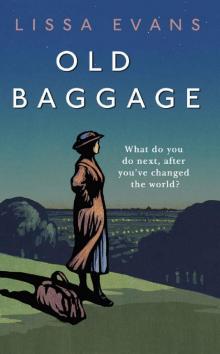 Old Baggage
Old Baggage Wed Wabbit
Wed Wabbit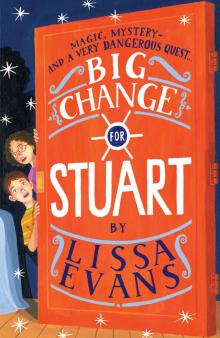 Big Change for Stuart
Big Change for Stuart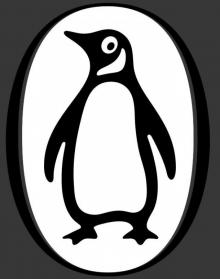 Spencer's List
Spencer's List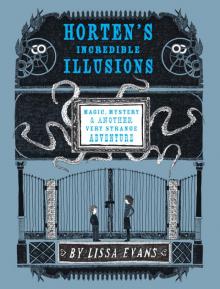 Horten's Incredible Illusions
Horten's Incredible Illusions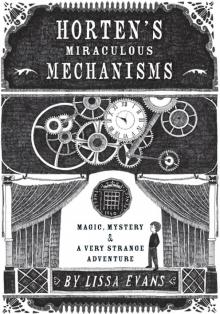 Horten's Miraculous Mechanisms
Horten's Miraculous Mechanisms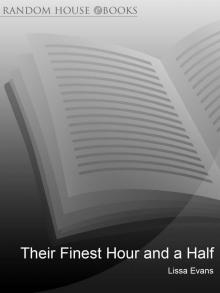 Their Finest Hour and a Half
Their Finest Hour and a Half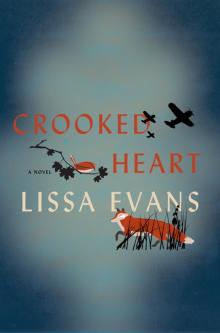 Crooked Heart
Crooked Heart